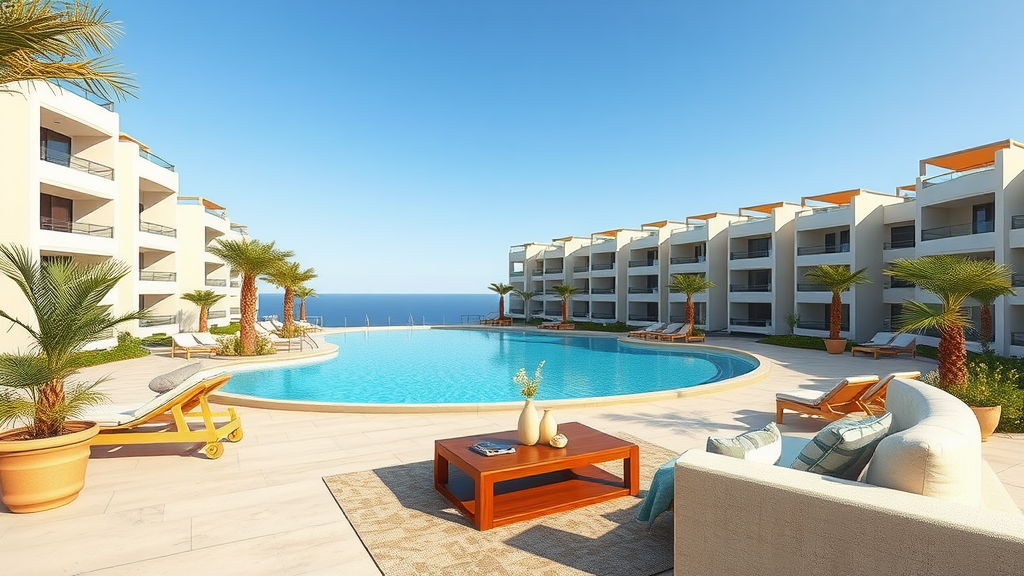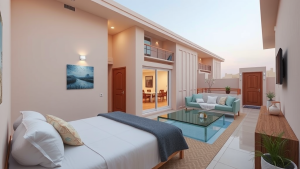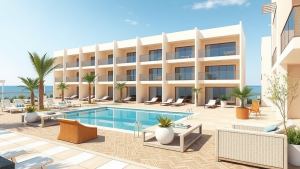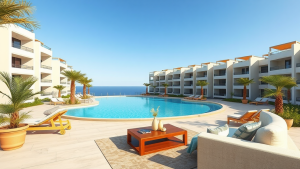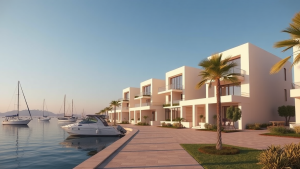Essential accessible home features for retirees
As you plan for retirement, ensuring your home is comfortable and safe can significantly enhance your quality of life. Accessible home features can help you maintain independence and improve daily living. Here are essential features to consider when making your home accessible.
Stepless entry
One of the first considerations is how you enter your home. A stepless entry allows for easy access without the worry of stairs. This can be achieved by installing a ramp or ensuring your main entrance is at ground level. When possible, opt for wide doorways and pathways that can accommodate mobility devices.
Wide doorways and hallways
When moving around your home, especially if you use a cane, walker, or wheelchair, wide doorways and hallways are crucial. Aim for doorways that are at least 36 inches wide to enable smooth navigation. Moreover, ensure hallways are spacious enough to turn around easily.
Lever-style door handles
Traditional door knobs can be challenging to manage if you have arthritis or limited strength in your hands. Lever-style door handles are easier to grasp and operate. By replacing knobs with levers throughout the home, you can enhance accessibility and functionality. They not only look modern but are also user-friendly.
Accessible kitchen design
The kitchen is often the heart of the home, making it vital to design it with accessibility in mind. Consider the following adjustments:
- Lowered Countertops: Install countertops at a lower height to make meal prep easier.
- Accessible Appliances: Choose appliances that are easy to reach and operate. Side-opening ovens and front-loading dishwashers can be particularly helpful.
- Pull-Out Shelves: Use pull-out shelves and drawers to minimize bending or stretching.
Bathroom safety features
Bathrooms can pose unique challenges, but there are several ways to ensure safety:
- Grab Bars: Install grab bars near the toilet and in the shower or tub to provide extra support.
- Walk-In Showers: Consider a walk-in shower with a low threshold to reduce the risk of slipping and falling.
- Non-Slip Flooring: Use non-slip tiles or mats to increase traction in wet areas.
Smart home technology
Smart home technology can make everyday tasks easier. Smart devices, like voice-controlled lights and thermostats, allow you to manage your environment effortlessly. Additionally, you can set up alerts for important events, such as medication reminders or safety notifications.
Adjustable lighting
As vision changes with age, adjustable lighting can help enhance visibility in your home. Consider using:
- Dimmer Switches: These allow you to adjust the brightness of lights to suit your needs.
- Motion-Activated Lights: These can illuminate dark areas without needing to fumble for light switches.
Comfortable flooring
The type of flooring in your home can significantly affect safety and comfort. Choose materials that are cushioned, such as carpet or rubber flooring, to help reduce the risk of slipping or falling. Avoid slippery surfaces and uneven flooring, which can pose hazards.
Emergency preparedness
Planning for emergencies is also a crucial aspect of accessible home features. Here are a few recommendations:
- Emergency Contacts: Keep a list of emergency contacts visible and easily accessible.
- Easy Access to Exits: Ensure all exits are clear and accessible for quick evacuation if necessary.
These essential accessible home features can make a significant difference in your daily life during retirement. By prioritizing safety, comfort, and independence, you can create a living space that supports your lifestyle and wellness. Remember, the goal is to empower yourself to live fulfilling and independent days in your retirement years.
Benefits of home modifications for aging in place
As we get older, making our homes more accessible can significantly enhance our quality of life. Home modifications designed for aging in place offer various benefits that cater to the unique needs of retirees. Understanding these advantages can help you or your loved ones make informed decisions about creating a safe and comfortable living environment.
Increased safety and fall prevention
Aging often brings about mobility issues, which can increase the risk of falls. Home modifications can include installing grab bars in bathrooms, non-slip flooring, and better lighting to reduce hazards. These simple changes can greatly minimize the risk of falls, helping you feel secure in your home.
Enhanced independence
Accessibility features allow retirees to perform daily tasks independently. A zero-threshold shower or walk-in tub, for example, makes bathing easier and safer. Additionally, modifying kitchen countertops to an appropriate height can improve meal preparation, eliminating the need for assistance in these areas.
Improved comfort and convenience
When modifications prioritize comfort, the home becomes more enjoyable. Installing lever handles instead of traditional doorknobs, adjusting cabinet heights, and ensuring that frequently used items are easily reachable can create a user-friendly space. These modifications can ease the daily grind and make home life much more pleasant.
Increased home value
While accessibility modifications primarily focus on safety and comfort, they can also enhance your home’s market value. Homes with features that cater to older adults can attract a broader range of buyers. These modifications are seen as appealing upgrades, potentially leading to a higher selling price when it’s time to move.
Customization options
Every retiree has unique preferences and needs. Home modifications can be tailored to suit individual lifestyles. Whether you prefer a cozy reading nook with accessible shelving or an open-concept design that reduces barriers, the options are nearly limitless. Customizing your home provides you with a living space that genuinely reflects your desires and makes your daily life more enjoyable.
Support for caregivers
For retirees receiving assistance from family or hire caregivers, home modifications can greatly alleviate physical strain. A well-designed space can make tasks such as lifting, moving, or preparing meals easier. Features like wider doorways can accommodate wheelchairs or walkers, allowing caregivers to provide better support without risking injury to themselves or their loved ones.
Cost-effectiveness over time
Investing in home modifications may seem daunting initially, but it can save you money in the long run. By improving accessibility and preventing accidents, you can reduce medical expenses associated with falls and injuries. Long-term care may also become less necessary if you modify your home to meet your needs, further decreasing healthcare costs.
Community and connection
Living comfortably at home allows for maintaining social connections. Aging in place means you can keep close ties to neighbors and friends, making social interactions easier and more enjoyable. A more accessible home allows visits from family and friends without the awkwardness of navigating a challenging environment.
The benefits of home modifications for aging in place are extensive. From safety and comfort to enhanced independence and better relationships, these changes can transform a standard home into a suitable sanctuary for retirees. If you or a loved one are considering these modifications, assess your needs and preferences carefully. Engage with professionals who specialize in accessible home features to ensure your modifications align with your requirements. By doing so, you can create a home that truly supports your lifestyle as you age.
Creating a home that caters to the needs of retirees is not just about comfort—it’s about enhancing quality of life. Essential accessible home features, such as wider doorways, non-slip flooring, and user-friendly bathroom installations, can significantly ease daily routines. These modifications empower retirees to maintain their independence and enjoy their golden years without compromising safety.
The benefits of home modifications extend far beyond physical accessibility. They promote a sense of security and reduce the risk of accidents, allowing you to move freely and confidently in your own space. Moreover, these enhancements can boost mental well-being, as you feel more in control of your environment. By investing in these accessible features, you are not only preparing for the future but also creating a welcoming space for family and friends to visit, fostering social connections that are essential for emotional health.
Retirement should be a time of relaxation and enjoyment, and your home should mirror that sentiment. By prioritizing accessible home features and understanding the benefits of thoughtful modifications, you can create a safe, inviting, and comfortable living space tailored to your evolving needs. These changes are an investment in your peace of mind and a commitment to making your home a haven for years to come. Embrace these improvements to ensure your home supports you as you age gracefully and live life to the fullest.
20% cheaper – 2 bedroom apartment with swimming pool in el helal Hurghada under 125k — family-friendly for german digital nomads
19% off – 3 bedroom apartment in long beach resort Hurghada under 150k — beachfront properties for norwegian golfers

